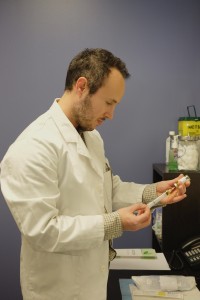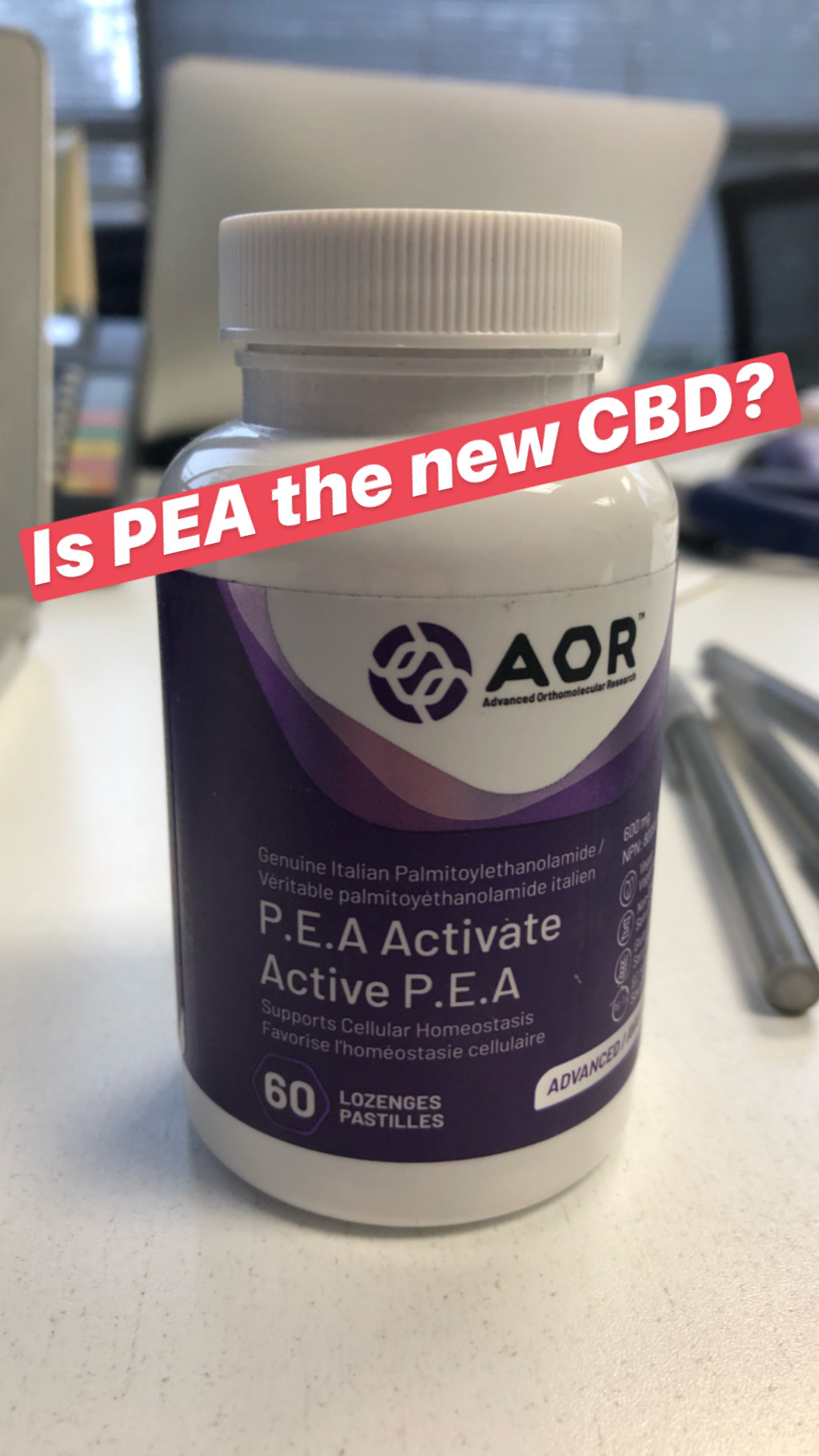Have you ever woken up in the morning feeling groggy and exhausted? That’s because our bodies naturally respond to light. In fact, bright light upon waking is essential for maintaining a healthy sleep cycle—not just for one day, but for days, weeks, and even months. In this blog post, we’ll explore why bright light upon waking is so important and how it can help improve your health and well-being.
What Is a Sleep Cycle?
A sleep cycle is the process by which our bodies move through different stages of wakefulness and sleep throughout the night. It’s made up of two main phases: rapid eye movement (REM) sleep and non-rapid eye movement (NREM) sleep. During NREM sleep, our bodies are getting ready for REM sleep, which is when we dream. Each night, we usually go through 4–5 cycles of REM and NREM sleep that last about 90 minutes each.
The Role of Light in Our Sleep Cycles
Light plays an essential role in regulating our circadian rhythm—our body’s natural internal clock that tells us when to be awake or asleep. When it gets dark outside, a hormone called melatonin is released into our systems to help us fall asleep. When it gets light out again, another hormone called cortisol signals to us that it’s time to wake up and get going. Without adequate exposure to bright light upon waking, our circadian rhythms can become disrupted—which could lead to poor quality of sleep over time as well as other negative health effects such as fatigue, irritability, depression or anxiety.
Benefits of Bright Light Upon Waking
Exposing ourselves to bright light first thing in the morning helps reset our internal clocks so that we can stay awake during the day and fall asleep at night more easily. This means we can get better quality rest overall! Additionally, exposing ourselves to bright light in the morning may also provide cognitive benefits like increased alertness and improved concentration throughout the day.
How much light is optimal?
A recent study published in Sleep Science and Practice found that exposing participants to bright light of at least 2500 lux for 30 minutes after waking triggered the highest cortisol response. This study also revealed that dim lighting of less than 500 lux did not produce a significant change in cortisol levels, meaning that it was not sufficient for resetting the circadian rhythm.
Another study conducted by researchers at the University of Oregon determined that conflicting with the body’s natural expectations can have serious consequences; exposure to bright light of more than 5000 lux after waking up in the morning disrupted cortisol rhythms, leading to an increase in stress hormones and a decrease in alertness and productivity. The optimal level of light exposure after waking appears to be between 2000-3000 lux, as this amount is both beneficial for circadian rhythm health and does not induce a stress response.
An experiment performed at Northwestern University found that exposure to bright light between 2000-2500 lux resulted in greater alertness and improved performance on cognitive tests as compared to regular office lighting levels. Thus, we can conclude that exposing oneself to bright light between 2000-3000 lux within thirty minutes of waking is likely most beneficial for resetting our circadian rhythms, improving alertness and productivity, reducing stress, and promoting overall wellbeing.
What is the best light source?
The optimal light source to be exposed to upon waking is one that mimics natural sunlight. By exposing yourself to a full-spectrum light therapy, ideally within the first hour of waking, your body will be more likely to respond positively. This type of light therapy helps regulate the body’s production of melatonin and cortisol.
The most effective type of full-spectrum light therapy involves artificial lights that mimic natural daylight and provide a bright white light similar in color temperature to the midday sun. For example, LED bulbs that have a high Color Rendering Index (CRI) are ideal for providing a balanced spectrum of light. Additionally, adjustable lamps can provide an even greater degree of control over brightness levels by allowing users to adjust the intensity according to their own preferences.
Conclusion
Bright light upon waking has been shown to improve both physical health (by helping regulate our circadian rhythm) as well as mental health (by boosting alertness). So if you want to feel more energized during the day and get better quality rest at night, make sure you give yourself some extra exposure to bright light first thing in the morning! Even if it’s only for a few minutes each day—it could make all the difference in terms of improving your overall health and well-being!
Feeding a picky eater can be stressful and frustrating. It’s hard to know what to do when your child is constantly refusing to eat certain foods. But don’t worry there are a few simple tips and tricks you can use to make meals easier for everyone. Here are 10 tips for picky eaters that may help.
1. Involve children in meal planning and preparation
Involving your child in the cooking process can help them develop an appreciation for food, as well as an understanding of the effort involved in making a meal. This will also give them ownership over their own food choices, allowing them to decide what they’d like to eat on their own terms.
Here are some great examples of meals that are easy to prepare with kids https://homecookingmemories.com/easy-dinner-recipes-kids-can-help-make/
2. Offer small portions of food at first
If your child is hesitant about trying new foods, offer them smaller portions than you would typically serve so that they don’t feel overwhelmed or intimidated by the size of the plate in front of them. You can always provide them with a second helping when they finish their plate.
Here is a great resource for basic nutritional guidelines for kids https://caringforkids.cps.ca/handouts/healthy-living/healthy_eating_for_children#:~:text=Children%20need%20a%20balanced%20diet,food%20you%20serve%20at%20meals.
3. Make sure there are familiar items on the plate
Having a few familiar items on the plate (like macaroni and cheese, veggie sticks, or crackers) alongside unfamiliar ones gives kids something to rely on if they don’t take to the new item right away. this strategy makes it easier for them to take a risk and try it out without feeling uncomfortable or scared off by unfamiliarity.
4. Introduce one new food at a time
When introducing new foods, start with just one item at a time so as not to overwhelm your child with too much change all at once. Having too many new foods can be intimidating or even scary for some children (especially young ones).
5. Let children choose from two or three options when possible
Giving kids choices within reasonable parameters gives them more control over their meals without overwhelming them with too many options. This helps build trust between parent and child around food choices while also allowing kids some freedom in deciding what they’d like to eat each day/mealtime!
6. Offer healthy snacks throughout the day
Eating healthy snacks throughout the day helps maintain blood sugar levels and keeps kids from getting overly hungry during mealtimes. Doing this makes them more likely to try out new foods when presented with those same items during mealtime. Here are some great healthy snack ideas for the kiddos https://www.healthline.com/nutrition/healthy-snacks-for-kids
7. Don’t force feed
Forcing a child to eat something they don’t like can have a long-term negative effect on both the child’s development and relationship with food. It can make them feel helpless, scared and resentful. This can lead to a lack of trust in their parents, as well as the development of unhealthy habits such as overeating in the future.
Furthermore, forcing children to eat certain foods can lead to an aversion or even dislike towards those foods, which could limit a child’s diet and nutrition later on in life. Additionally, it can often lead to children eating too much at one time, which could contribute to weight problems down the line. On top of that, it may also discourage healthy eating habits as kids become more likely to prefer processed or junk foods since they’re seen as more fun or exciting than nutritious options. It would be far better for parents to encourage their children’s desire for healthy food by providing plenty of nutritious options and showing interest in what they’re eating instead of dictating what they consume.
Forcing kids to eat something they don’t want could lead to negative associations with that food item in the future. Instead, focus on offering healthy options and letting your child decide how much he/she wants of each item (within reason).
8. Use positive reinforcement
Positive reinforcement goes a long way towards helping kids learn healthier eating habits; praising good behavior (like trying out new foods) will encourage more of it in future dining experiences!
9. Take time out before meals
Taking five minutes out before meals allows both parents and children time alone together. This helps create an atmosphere conducive towards trying new things without fear of judgment or pressure from either side.
10. Talk about nutrition
Talking about nutrition doesn’t have to be boring; instead it should focus on why certain foods are beneficial (or not). This information can help form more informed decisions when it comes time for dinner!
Some simple nutritional supplements can also take some of the stress off of a period of picky eating. See my article on the top 10 supplements for kids health for more information.
Conclusion
Picky eating isn’t easy but there are ways you can make mealtimes less stressful for everyone involved. From including your children in meal planning and preparation processes all the way through offering healthy snacks throughout the day, these ten tips will help make dinnertime easier while still ensuring that your family eats nutritious meals together. If you feel that you require more counseling, feel free to book an appointment.
Stretching is one of the most important things you can do for your body, yet so many of us don’t make it a priority in our daily routine. Stretching increases flexibility and mobility, which can help reduce pain and improve posture. But there are even more benefits to stretching every day. Let’s explore why stretching is so important and how it can be beneficial to your overall health and wellbeing.
Stretching Increases Flexibility
The most well-known benefit of stretching is that it increases flexibility. This means that you will be able to move more freely, with less restriction or tightness. Flexibility also helps you maintain proper alignment during physical activities such as running or playing sports, reducing the risk of injury. Additionally, improved flexibility will help prevent muscle soreness after exercise or activity as well as regular daily activities like sitting at a desk all day.
A recent study from the ACSM’s Health & Fitness Journal found that regular stretching (defined as two to three sessions per week of around 10 minutes each) led to significant improvements in hip, shoulder and hamstring flexibility over a period of 12 weeks (1). Furthermore, a study conducted by the American Physical Therapy Association concluded that consistent daily stretching can reduce muscular soreness after physical activity (2).
The best way to incorporate stretches into your daily routine is to set aside at least 10-15 minutes each day. Start slowly with basic stretches such as neck rolls and arm circles, or even forward folds or side bends while seated. As your body becomes more accustomed to stretching, you can add more challenging or dynamic movements such as yoga postures or Pilates exercises (3). Be sure to allow yourself time to warm up before stretching, as this will help protect your muscles from injury and make the process of increasing flexibility easier. Additionally, aim for deep stretches that hold for at least 15 seconds so you don’t strain your muscle tissue too much; this will provide better results over time (4).
Stretching Reduces Stress
Stretching not only helps physically but mentally as well! Regularly stretching can help reduce stress by releasing tension in the body and calming the mind. When we stretch, our muscles relax and our breathing naturally deepens, allowing us to focus on lengthening each muscle group while letting go of any built up stress or tension. Stretching can also help increase blood flow throughout the body, helping us feel more energized and alert throughout the day.
Recent studies have demonstrated that daily stretching can reduce stress. According to a study conducted by researchers at the University of Tokyo, stretching for just 10 minutes per day reduced cortisol levels in participants. Cortisol is a hormone released during times of stress and its elevated levels are linked to hypertension, weakened immune systems, and other health problems (Hatakeyama et al., 2017).
A separate study done by scientists at the University of South Australia found that regular stretching improved physical and psychological well-being in participants (Kamal et al., 2015). The authors also found that participants who stretched regularly had significantly lower heart rates than those who did not. Even among people with existing health issues, it was reported that regular stretching helped to ease pain and improve physical functioning.
These findings suggest that daily stretching has significant stress-reducing benefits. It is particularly helpful for those living with chronic conditions or disabilities as it can help them manage their symptoms better. Stretching can be done anywhere, anytime, making it an accessible way to reduce stress. Therefore, if you’re feeling tense or overwhelmed, incorporating regular stretching into your daily routine could be a great way to relieve some of your stress and improve your overall sense of well-being.
Improved Posture
Poor posture is one of the main causes of neck and back pain, yet something we often overlook when trying to prevent aches and pains from developing in our bodies. Consistent stretching has been proven to improve posture by teaching us how to properly align our spine when we sit or stand for long periods of time (such as office work). Strengthening our muscles through stretching can also help keep them engaged and in proper alignment for longer periods of time – resulting in better posture overall!
Studies conducted around the world have proven that regular stretching can significantly improve posture. For example, one study published in 2017 in the Journal of Physical Therapy Science examined the effects of stretching on the improvement of posture among female students. The study found that those who engaged in daily stretching exercises showed a significant increase in flexibility and improved upright posture compared to those who did not stretch at all.
Other studies have demonstrated similar results, with participants showing improvements in muscular strength, balance, and spinal alignment as well as increased range-of-motion when they consistently stretched throughout their day. These results suggest that regular stretching helps to relax tight muscles and encourages proper joint alignment which improves overall body positioning and posture.
Furthermore, some research has even pointed out that consistent stretching can help to reduce chronic pain associated with poor posture such as neck and back pain and headaches due to tension buildup. Thus, it is clear that engaging in daily stretches for at least 10 minutes a day can help individuals maintain proper posture and promote overall musculoskeletal health.
Conclusion
It’s easy to see why incorporating regular stretching into your daily routine is essential for both physical and mental wellbeing! Not only does it increase flexibility, reduce stress levels, and improve posture; but it also helps boost energy levels throughout the day so that you always feel ready to take on whatever life throws your way! So next time you’re feeling stressed out or sore after a long day, try taking a few minutes out of your day to do some basic stretches – it could make all the difference!
References:
(1) ACSM’s Health & Fitness Journal: https://journals.lww.com/acsm-healthfitness/Fulltext/2016/05000/The_Effects_of_Stretching_on_Performance–A_Systematic.9.aspx
(2) American Physical Therapy Association: http://www.apta.org/PWNF/
(3) Harvard Health Publishing: https://www.health.harvard.edu/staying-healthy/the-importance-of-stretching
(4) Mayo Clinic: https://www.mayoclinic.org/healthy-lifestyle/adult-health/in-depth/stretching/art-20047931
Introduction:
October means apple season is in full swing. And while apples are delicious and a great source of fiber, they also have some surprising health benefits. Here are 5 reasons to make sure you include apples in your diet this fall.
1. Apples Can Boost Your Immunity
One of the essential components of a strong immune system is vitamin C, and apples are packed with it. Just one small apple contains approximately 10% of your daily recommended intake of vitamin C. Vitamin C is a powerful antioxidant that helps protect your cells from damage and supports a healthy immune system.
Apples are also a good source of vitamin A, which is important for a strong immune system. Vitamin A helps the body’s natural defenses against infection and disease. It also helps to keep the skin and mucous membranes healthy. The body needs vitamin A to form white blood cells, which help to fight infection. Vitamin A is found in both the skin and the flesh of apples, so eating a whole apple is the best way to get the benefits.
In addition, apples contain polyphenols, which are plant-based compounds that have been shown to boost immunity.
Apples contain a type of polyphenol called quercetin. Quercetin is a plant-based compound that has been shown to provide a number of health benefits, including boosting the immune system. One study found that quercetin supplements were able to increase the production of infection-fighting cells in the body. Another study found that quercetin supplements were able to reduce the severity and duration of cold symptoms. Polyphenols like quercetin are just one of the many reasons why apples are often referred to as a “superfood.”
2. Apples Can Help Reduce the Risk of Diabetes
Type 2 diabetes is a serious and growing health concern, with over 29 million Americans affected by the disease. Eating apples has been linked with a lower risk of type 2 diabetes. This is likely due to the fact that apples contain pectin. Pectin helps to slow the digestion and absorption of carbohydrates, which helps to keep blood sugar levels stable. Additionally, apples are a good source of antioxidants, which can help improve insulin sensitivity.
3. Apples May Help Lower Cholesterol Levels
One large apple contains about 4 grams of fiber, half of which is pectin. Pectin has been shown to reduce cholesterol levels by binding to cholesterol molecules and removing them from the body before they can be absorbed into the bloodstream.
Research has supported the notion that apples can help reduce cholesterol levels. One study showed that eating two apples a day for four weeks resulted in a seven percent reduction in bad cholesterol and a five percent increase in good cholesterol. Another study found that women who ate an apple a day had lower cholesterol levels and a decreased risk of heart disease. The antioxidants and fiber in apples are thought to be responsible for these benefits.
4. Apples Can Help Keep Your Heart Healthy
In addition to reducing cholesterol levels, apples can also help keep your heart healthy by preventing plaque build-up in your arteries. This is thanks to the antioxidants found in apples, which help keep your arteries clear and prevent inflammation. One study published in the “European Journal of Nutrition” showed that eating apples every day for four weeks can reduce bad cholesterol levels by up to 10 percent.
5. Apples Can Aid in Weight Loss
Because they’re high in fiber and water, apples can help you feel fuller longer and prevent overeating throughout the day. 
Research indicates that apples may play a role in weight loss. One study showed that obese women who ate an apple before lunch felt more satiated and ate fewer calories than those who didn’t have an apple. Another study found that eating an apple at least three times per day helped participants lose weight and body fat. This may be due to the high fiber and water content of apples, which can help you feel fuller longer and prevent overeating. Additionally, apples are a low calorie food, providing just 95 calories per medium-sized apple. They’re also a good source of energy-boosting phosphorus.
Conclusion:
The next time you’re at the grocery store, be sure to pick up a few extra apples. Not only are they delicious and nutritious, but they also have some impressive health benefits. Apples can boost your immune system, lower your cholesterol levels, and even help you live longer. So stock up while they’re in season and enjoy all the benefits this versatile fruit has to offer.
Fasting for six years
I thought it was a good time for me to personally reflect on the last six years of intermittent fasting. Yes, for the last six years I have been following a relatively strict program of fasting for 16-20 hours of the day. Usually this means having my last meal of the day around 6pm and my first meal the following day at 11am.
I remember first hearing about the benefits of intermittent fasting (IF) at a medical conference organized by the Association for the Advancement of Restorative Medicine back in 2016. After Dr. Denis Wilson M.D. spoke about all the clinically supported benefits of IF as well as his own personal journey with IF, I was sold!
Fasting and Climbing
That was around the same time I started to take rock climbing seriously. A was training 2-3 days per week and for around 2 hours each session. I decided it would be an interesting experiment to combine IF with my morning training. I was hitting the gym while in a fasted state (usually around 16 hours at that point) and would train as hard as I could.
When the body is in a post 14 hour fast it starts to convert fat into an energy source called ketones. This is because all the sugar stored in the body has been used up. Exercising while fasting speeds up this process. I was amazed to see how quickly this combination of fasting and exercise transformed my body and my health. Over the course of a year I lost 15lb and went up several grades in my climbing. My climbing partners couldn’t believe I was able to climb hard on an empty stomach, but I actually felt lighter and clearer. I would try to have my first meal of the day within an hour after workouts for optimal protein metabolism to build muscle. I would regularly get comments from familiar faces at the gym asking if I’m doing anything special outside of the gym. I simply told them that I’m fasting and climbing. Pretty simple but very effective.
Finding the right program
Over the following 5 years I had short 2-3 week periods where I would take a break from IF but would soon return as I felt my best, looked my best and climbed my best while on a pretty strict IF program. I have since recommended IF to dozens of patients, the majority of whom see results within a few months. One of my biggest supporters and now followers of IF is my dad. He saw such dramatic results that IF is now a regular lifestyle habit for him as well.
I dabbled a few times with doing pretty long fasts (20-23 hours) and eating only one meal per day but I found that this was a bit hard on my body. I was getting irritable and was not performing very well at the gym. I now have a pretty good understanding of how many hours my body likes to fast for and how many meals per day is best.
Everyone is going to find a sweet spot for themselves. I don’t recommend forcing the body into a particular program but to try fasting for different lengths of time and see what feels and works best. It does take a little getting used to at first but it is important to remember that this is a very natural state for the human body.
It’s only natural
Through most of human evolution humanity had to go for extended periods of time without food. In fact, an abundance of food at our beck and call is likely contributing to a lot of chronic disease in our modern way of living. Many religious traditions still practice fasting in order to clear the mind, body and spirit. Centuries of cultural practice as well as hundreds of recent studies are in support of fasting in one form or another. It is one of the cheapest, simplest and most effective medical programs I can recommend for a patient.
What lies ahead
Looking ahead to the next decade, I don’t see myself giving up IF anytime soon. There are a few other lifestyle changes I would like to implement but IF will continue to be the backbone of my personal health and wellness program. There are some individuals including in pregnancy where IF is not recommended. I encourage those of you curious about IF or trying it out, to at least have a consultation with a health professional like myself. The benefit of being supervised by a Naturopathic Doctor is the peace of mind that your are practicing something that is safe for your body, you have someone to answer questions as they arise and even to run blood tests if necessary. If I have inspired at least a few people to give IF a try then I have passed along a valuable lifestyle tool as it was passed to me six years ago. Happy fasting everyone!
It was my hope to find an effective alternative to Cannabidiol (CBD) that wouldn’t land me in jail when I travel; so is PEA the new CBD?
PEA stands for Palmitoylethanolamide. It is a fatty acid that is found in Eggs, Cheese, Meats and Peanuts. We also make PEA during stress, infections, inflammation, trauma, allergies, pain, cardiac disease, kidney disease and obesity. Much like our endocannabinoids, PEA is responsible for maintaining cellular homeostasis.

How does it work?
While PEA does not have a direct effect on Cannabinoid receptor (CB1 and CB2) it does have similar mechanisms of action to our endocannabinoids and cannabidiol (CBD). PEA looks very similar to our body’s own endocannabinoids (AEA and 2-AG). These similarities allow PEA to exert effects similar to our AEA and 2-AG.

PEA down regulates mast cells, which are responsible for the release of histamine and other inflammatory mediators. PEA can therefore be a powerful molecule for immune heath, inflammation, pain, neuro-protection and allergies. PEA has direct action on receptors GPCR55 and GPR119, which produce effects similar to activation of CB1 and CB2 by endocannabinoids, THC and CBD. PEA also acts similarly to CBD by affecting the breakdown of endocannabinoids via inhibition of the enzymes FAAH and MAGL.

The Research
Several studies have shown that when PEA is used with opioid type drugs for low back pain, the dose of the opioids could be reduced significantly. PEA was found to exert pain relief animal models of inflammation and neuropathic pain. These analgesic effects are thought to be due to increasing endocannabinoid levels similarly to how CBD works. All in all many studies have revealed that PEA exerts similar effects to CBD. So I thought I would give this supplement a whirl, as a alternative to CBD (especially for travel) would be an important option for patients using CBD.
My 5-day Trial with PEA
I took the supplement P.E.A. Activate from AOR , which contains 600mg PEA per lozenge. My daily dose was two lozenges per day and I did that for 5 days. I noticed a strange light-headed feeling about 5 minutes after chewing my first lozenge. The feeling lasted for a bout 30min. I was excited that I actually felt a bit different after that fist dose by unfortunately each dose produced a similar effect (a light relaxing feeling) that only lasted between 30-60min. There didn’t seem to be much carry over from one dose to another. The effects were always pretty fast acting but short-lived. Furthermore I had a return of some muscle soreness that was absent for most of the time that I was taking my CBD supplement. So, it seemed like, for me, the PEA was not having the same effect that I had experienced while on CBD.
In summary, the effects that I experienced during my PEA trial were fast acting but short-lived. PEA may therefore be a useful tool for acute episodes of anxiety, pain etc… but it did not have the same accumulative and long term effects that I experienced with CBD. The research on PEA is compelling and it is possible that this supplement warrants a more long-term trial. According to the research PEA seems to be a potential alternative to CBD but from my experience it falls a bit short. Check out my video review of PEA here.
Dr. Shawn Reviews...Cannabis: Tweed Argyle Spray
One goal of Naturopathic pediatrics is to use natural therapies to prevent and treat mild to moderate conditions, resorting to pharmaceutical and surgical interventions as secondary options or in emergency situations. The core belief in Naturopathic pediatrics is to encourage the body to heal itself. This is achieved through supporting the immune system, addressing nutritional deficiencies, promoting a healthy diet and lifestyle; including exercise, sleep and mental habits.
Disease as a Process
Fever is an excellent example of how a naturopathic approach may differ from a conventional approach. A fever is our natural defence mechanism against a pathogen. By raising the temperature of the body a few degrees many pathogens (viruses, bacteria) stop functioning optimally and the body activates inflammatory immune cells and enzymes to destroy the invading organism. While conventional medicine often sees disease symptoms, like a fever, as something to be suppressed, naturopathic doctors often see them as something to be promoted.
It has become commonplace to try to intervene in the disease process too swiftly, taking medications to decrease fever and inflammation prematurely. The Naturopathic Doctors role is to recognize the stages of the disease process, closely monitoring a fever, knowing when a fever should be left alone and when intervention is necessary. All the while helping the child feel better without interfering in the healing process.
There are generally 5 stages of the disease process: Incubation, Aggravation, Destruction, Abatement and Reconstruction.
Incubation is where the invading organism is accumulating in certain areas of the body. This process can take hours to days to weeks to months. The immune system reacts and either removes the organism or the organism replicates too quickly and the body moves to the next stage. It is common to not have any obvious signs of infection during this stage.
Aggravation includes the usual signs of inflammation, replication of immune cells, fever, redness, pain, malaise, loss of appetite and fatigue. These are signs that the immune system is hard at work and should be encouraged. This is where suppression commonly occurs with fever reducing medications, and anti-inflammatories, which can revert healing back to the incubation phase.
Destruction is the peak of inflammation and results in the destruction of one organism or another.
Abatement occurs when the fight is over and it’s time to clean up the debris. The immune cells, dead organisms and inflammatory fluids must be removed by the body. The fever “breaks” and sweating begins. Coughing up phlegm, runny nose, diarrhea and other discharges remove the debris from the body. In conventional medicine, cleanup is often viewed as an additional set of annoying symptoms that need to be suppressed by drugs, often impeding on the “cleanup” process.
Fever reductions after administering fever reducing medications should not be confused with abatement. The fever will often spike again. The immune system is trying to do its job but is being suppressed.
Reconstruction happens next. The body is reconstructing damaged tissue, the body is attempting to reset back to its original state.
Most pediatric infections will run their course, and the child will heal themselves. The Naturopathic Doctor watches the disease process closely, waiting to see if the body will heal or get worse requiring intervention. Besides making this decision, it is also the Naturopathic Doctors role to encourage processes like fevers, rather than suppress healing and teach parents to save fever reducing medications until necessary.
Intervention
The Naturopathic Doctor monitors the inflammatory process, only intervening to prevent a severe state of aggravation. Mild interventions such as cooling baths, friction rubs, warming socks can often lower a high fever and help the child feel better. These therapies have their limits and are not always sufficient. It is also the Naturopathic Doctors role to recognize an emergency situation that requires pharmaceutical intervention and to educate the family with regard to monitoring the disease and recognizing an emergency situation.
Safety
The first principle of Naturopathic Medicine is “primum non nocere” first, do no harm. Safety is a combination of good diagnostics, good choice of treatments, prevention, and physician intervention when necessary. The properly trained, properly regulated Naturopathic Doctor should be able to guide the family through a confusing landscape of both conventional and non-conventional medicine by knowing which “alternative” approaches are safe and effective and when referral to another integrative professional or physician will be in the best interest of the infant, child or adult.
Dr. Shawn is now at KidCrew Fridays from 10am-6pm
Why get a license?
I want to tell you how to obtain a license for Medical Marijuana. Every month I see a handful of patients who are trying to medicate with unregulated cannabis obtained either through “a guy” or a local illegal dispensary. The problem with this approach is that you are buying an unregulated product, meaning you cannot guarantee its purity, quality, potency, and cannabinoid profile.
There are some decent products out there but largely its hit and miss and perhaps the most frequent complaint is a lack of consistency from batch to batch. Its funny how patients will be shy about discussing use of medical marijuana with me and yet will go to a complete stranger for their medication. A growing part of my practice is convincing patients to transition from their “street weed” to a proper regulated medical marijuana product.
Although, as a Naturopathic Doctor, I am not able to directly prescribe medical marijuana in Ontario, I am fortunate to have a good professional relationship with a licensing clinic and am writing an average of 3-5 patient referrals per week. Most licensing clinics will require a referral from a healthcare professional.
How to get a license
The process is quite simple: a patient will come in either having experience with cannabis or will be curious as to whether cannabis can help them. I will then preform an assessment, including a health history and short physical exam, in order to determine if they would benefit from cannabis. A referral is then made to the licensing clinic. The licensing clinic then calls the patient to setup an appointment to get a license for access to medical marijuana. Once setup with an account the patient then does all their ordering online through a regulated distributor such as Tweed, Aphria, Tilray or MedRelief.
These regulated grower/distributors have an excellent selection of strains and oils with varying cannabinoid concentrations and terpene profiles. Most importantly, the purity and potency are guaranteed and there is very high consistency from batch to batch. Therefore, if you find a strain or oil that works for you, you can pretty much guarantee it will work the same way every time you order it.
Common conditions for referral
The most common conditions I write referrals for are: Insomnia, Multiple Sclerosis, Chronic Pain, Migraine, Irritable Bowel Syndrome, PTSD, Inflammatory Bowel Disease, Cancer, Fibromyalgia and Neurological Conditions with painful spasms.
The environment in Canada with regard to cannabis is going to change as we approach legalization, but until that happens I would advise you that it is usually better to consume regulated medicines, this medication just happens to be marijuana.
For more great articles and information on cannabis and CBD check out the link below:













